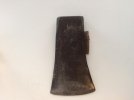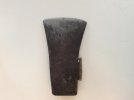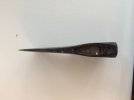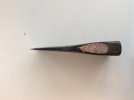- Joined
- Jul 2, 2010
- Messages
- 1,486
This is marked with Plumb 5. I bought it hoping it is a rafting pattern. It does have fully beveled edges and shows no mushrooming so I'm hoping it is.



I'm thinking a 36" straight handle. Not sure as I've never hung an axe before but I've seen a few members projects here and I'm guessing that's the way to go.



I'm thinking a 36" straight handle. Not sure as I've never hung an axe before but I've seen a few members projects here and I'm guessing that's the way to go.
Attachments
Last edited:





